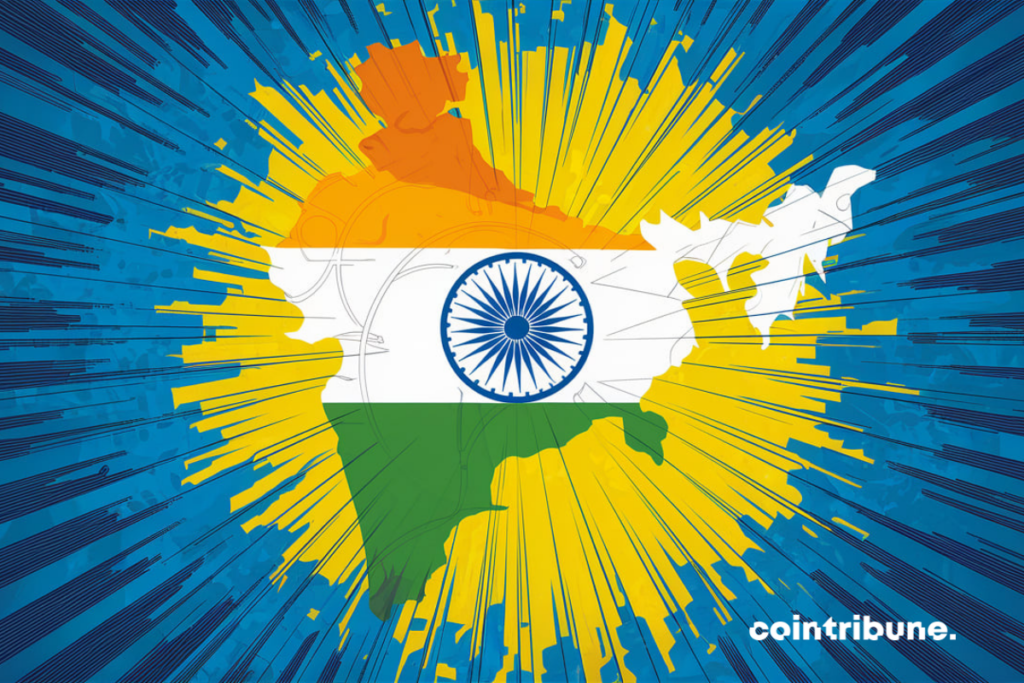India Launches Globalization of the Rupee
India plans to connect around twenty countries to its payment network over the next five years.

Asian De-dollarization
The United Arab Emirates and India (both members of BRICS) are among the nations most eager to purge the dollar from their exchanges. In July 2023, Narendra Modi and Sheikh Mohamed bin Zayed Al Nahyan signed an agreement providing for the settlement of transactions in their respective currencies, the rupee and the dirham.
The two nations maintain very strong cultural and commercial relations. India is the UAE’s second-largest trading partner, and the UAE is India’s third-largest trading partner. Their bilateral trade stood at $84 billion in 2023, compared to $73 billion a year earlier.
The transaction mechanism is simple: UAE exporters are paid in Indian rupees (invoice denominated in rupees) and credited to their nostro account opened with a bank operating in India. Conversely, Indian exporters receive dirhams for their exports (invoices in dirhams).
Trading in local currencies aims not only to boost bilateral trade but also to develop a payment mechanism enabling the emergence of an INR/AED parity (forex). The goal is to reach volumes that would ensure good liquidity and thus low conversion fees.
New Blow to the Petrodollar
The very first agreement was concluded between the Indian Oil Corporation (IOC) which pays in Indian rupees for oil produced in the UAE.
Central banks of both countries are optimistic, but more work is needed to convince small and medium-sized enterprises.
The Khaleej Times reports that transaction fees are currently around 2% on average. Fees remain very high for small businesses. The goal of both countries is to ensure that local currency payments “significantly reduce transaction costs”:
“This local currency settlement system (LCSS) could make exports more competitive and more accessible to small players. Besides reducing transaction costs, this payment system offers quick settlement times.”
The Emirati newspaper adds:
“The rupee-dirham agreement is not a de-dollarization. It aims to reduce reliance on the dollar. The rupee-dirham agreement will protect bilateral trade from geopolitical risks […] and help both countries reduce their dependence and exposure to the reserve currency that is the dollar.”
Internationalization of the Rupee
The Reserve Bank of India (RBI) plans to extend its instant payment system to 20 countries over the next five years.
In its annual report, the RBI indicates that interconnection work will begin this year. The project will be led by the National Payments Corporation of India (NPCI) via the UPI (Unified Payments Interface) system.
UPI is operational in France, Sri Lanka, Bhutan, Nepal, Singapore, Peru as well as in the United Arab Emirates.
The NPCI plans to soon deploy its UPI system in about ten Asian countries. These include Malaysia, Thailand, Philippines, Vietnam, Singapore, Cambodia, South Korea, Japan, Taiwan, and Hong Kong.
“Efforts are underway to internationalize the Indian rupee through the settlement of bilateral trade in local currency”, states the RBI report.
De-dollarization is not a myth. A myriad of solutions are currently being tested around the globe.
That said, Bitcoin remains far ahead of its time. It is an almost free international payment system and a store of value at the same time.
Transferring the equivalent of 100 million rupees in Bitcoin costs $1. Conversely, 2% fees on 100 million give us 2 million rupees, or $24,000…
Don’t miss our article on de-dollarization: The Dollar Falters.
Maximize your Cointribune experience with our "Read to Earn" program! For every article you read, earn points and access exclusive rewards. Sign up now and start earning benefits.
Bitcoin, geopolitical, economic and energy journalist.
The views, thoughts, and opinions expressed in this article belong solely to the author, and should not be taken as investment advice. Do your own research before taking any investment decisions.